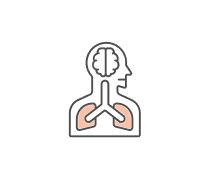_________ consist of cells having similar function and structure.
Fat, bone, and blood are examples of __________ tissues.
_____ is considered connective tissue because it provides avenues of...
______ initiate and transmit electrical signals.
____ muscle tissue pumps blood.
_____ muscle tissue moves bones.
_______ tissues are divided into galnds and epithelia.
In the extracellular matrix, _____ provides strength and the ability...
________ is considered anything outside the epithelial layer.
_______ is the immediate environment of most of the body's cells, and...
______ is the most abundant substance in the body, and accounts for...
________ is the volume of water contained in within outer epithelial...
________ is located within the cells, and is rich in ______.
______ is located outside of cells, protein rich with _______.
___________ control is within the organ of interest.
_______ control is within the nervous and endocrine systems.
_____ are two or more different tissues combined.
________ system provides communication through hormones in the...
_______ system communicates through electrical singals and...
____ system protect body from the external environment.
_____ system filters blood to regulate concentrations, and eliminates...
______ is blood producing acids and proteins that are transported into...
_______ materials selectively put back in bloodstream.
_______ transports from lumen to bloodstream.
______ unabsorbed materials eliminated as feces.
______ is a substance which dissolves in a solvent.
________ is a substance in which a solute dissolves.
_________ feedback regulates by changing the oppositedirection of the...
______ feedback is the response of the system goes in the same...
________ is a fact held within a narrow range, or a set point.
______ monitors controlled variables for the set point, if error...
__________ compares the regulated variable to the set point and...
______ are the cells, tissues, or organs that receive the final...
_________ have the ability to do thermoregulation.
Poikilothermic do not have the ability to do ________.
___________ is the temperature deep within the body.
__________ is the science of body function.
_____ muscle tissue controls movement through hollow tubes and organs.
_____ system brings oxygen into body and eliminate carbon dioxide.
_______ system defends the body against pathogens and abnormal cells.
In the extracellular matrix, _____ are long, fibrous proteins.
___________ are used to maintain homeostasis.
_______ system breaks down food and absorbs it into the body.
_______ is body temperature below the set point, and _______ is body...
___________ is the ability to maintain their body temperature within a...
_______ system supports body, and allows voluntary movement and...
_______ system transports molecules throughout body in the...
______ fluid from the bloodstream into tubules.
_______ tissue covers skin and lines hollow organs, with the internal...
ECF is divided into _______, the fluid portion of blood, and _____.
_____ system generate offspring.
Muscle tissues are divided into ____, _____, and ______.
Which of the following is incorrectly matched?
Which of the following is false about endocrine glands?
Which of the following is not a function of connective tissues?
Homeostasis is kept in range by
Which of the following is false about exocrine glands?
















